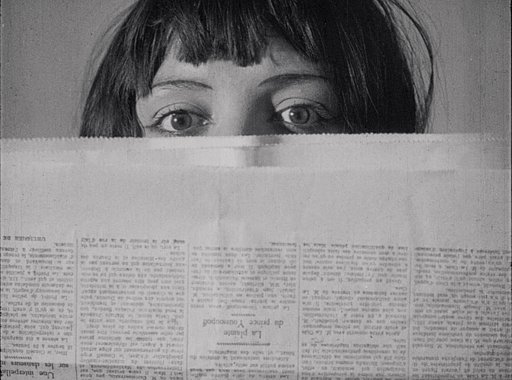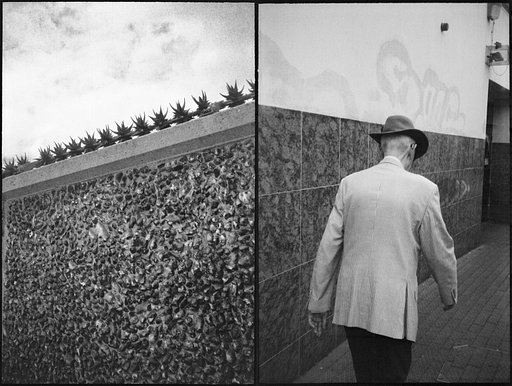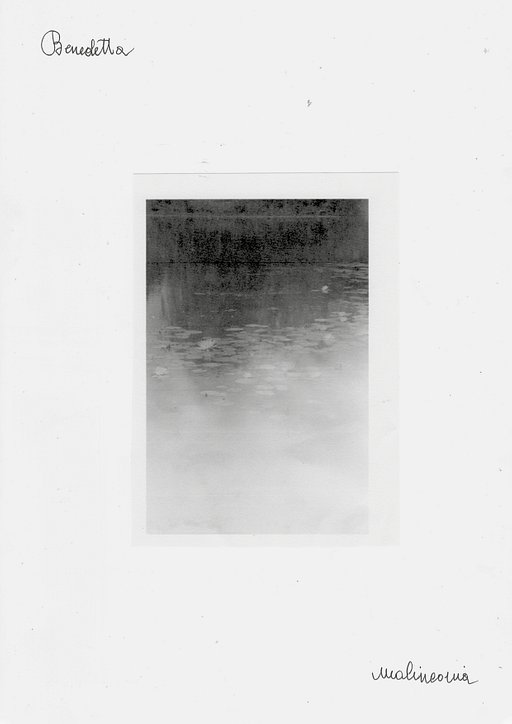Between Film and Digital: Interview of A History of Wise Men Project
3 Share TweetIn the artistic field, there is surely still some room for surprises. This Kickstarter campaign might seem like it is starting like any other: Andrea Calvetti & Maksim T. Kuzin, two young friends who have met in college and decide to start a project together. What comes out though, is A History of Wise Men - a short film with an interesting aesthetic approach and the desire to make the viewer experience unforgettable.

How did you first get into cinema?
Maksim: I knew I wanted to be a film director when I was a 15 years old, and watched Edward Yang’s Yi Yi. I could understand why Yang made those directing choices. For the first time, I could suddenly hear that invisible language that runs within the frames – where the director is the main lead. It hit me. When I turned eighteen, the first thing I did was apply to film school in the States, which got me into Columbia College. There I met Andrea, and since then, we’ve been working together.
Andrea: It all began when my cousin brought home two films by Stanley Kubrick, 2001: A Space Odyssey and A Clockwork Orange. I saw both in a raw manner and felt connected to them, not only as a viewer – I could relate to it visually, saw the camera behind the image, its movement, those who moved it, the reason why it moved in a certain way and the emotion derived from a specific angle. This also happened in a period of my life where I was experimenting with a new film camera my dad brought home. I wasn’t very good at writing, but I have always been very sensible and interested in my surrounding, so photography gave me a voice. Only when it came time to pick a university, I decided to move into the path of cinema. I felt like photography was something that came natural to me and wanted to keep it such. I didn’t feel the need of having a professor giving me a structure or telling me what is good and what is not.
What is the most exciting part of being a cinematographer/director?
Andrea: Being a cinematographer is not an easy thing, you need to give a vision to a written project, deal with budget limitations and director’s viewpoints, which can be visually challenging. It is phenomenal when the director is aligned with you, knows how you work and the budget is realistic for the project you are creating. Maksim and I are very much like this, we finish each other thoughts, know well how to work with each other and how to achieve what we want. We are both influenced by the same artists, and have a very strong and personal aesthetic that takes a lot of its grounding from the mid-sixties and seventies. We love working with film that is 16mm, super 16mm or 35mm. In our projects, we both like having a voice in overall decisions – Maksim is more than a director, as he has a strong visual mind and always has a say in the art department, and I’m more than a cinematographer, as I also give thought to the story and its execution, as well as to costume and set design.
Maksim: A director is a psychologist, a historian, a sociologist and a visual writer. You have to explore every underlying emotional connotation behind the choices you make: from acting preferences and the composition, to camera movements and treating your crew with decency. It’s important to read between the lines – to make the viewer feel for the screen through the invisible language of empathy. It’s difficult to say what the most exciting part of being a director is. But if you do your job well, you are capable of making strangers cry by telling them a fictional story. How oddly fascinating is that ability? You made people really care for a conscious vivid dream. That’s exciting.
Andrea, you mention that you were fond of photography before studying cinematography. Do you think that your photographer skills influenced you cinematographer vision?
Andrea: My photographer’s skills most definitely influenced my cinematography. In fact, I feel that the most powerful aspect of my cinematography is the composition. Each shot for me is like a photo-graph, a painting, which needs to exist alone. Every frame needs to be perfect. One thing that I learned that you don’t think about as a photographer is cutting everything together. In other words, how the shot that you are working on right now will connect with the previous shot and the next one. Will it flow naturally?

Your short film will take place in the 70’s – is this a period that fascinates you?
Andrea: I could talk for days about that era. Seeing it in those years was Maksim’s decision as he wrote the story. I am glad he did, clearly, because those who know me jokingly think that I am a time traveler. I grew up with a dad who passed on me his retro aesthetic personality and attachment to products created in that era – the cars, the Olivetti desks or even Artemide’s Nesso lamp. I grew up in a sixties/seventies mindset if you will, so I just fall in love with everything that is curvy and in general recalls that era. My room seems to be an untouched sixties designer room, my daily drive is a 1961 Buick Electra and my first facial hair were sideburns, and they never left my cheeks.
Everything in the sixties and seventies was based on the look rather than comfort, aesthetic over functionality, quality over quantity, eccentricity, wanting to break from the past, the dreams about space travel, the use of color and patterns, the freedom of bodies, the reconnection with nature, and unstructured music.
Maksim: While Andrea is more about the 70's aesthetic, I’m rather curious of its history. A History of Wise Men takes place early in those years, with Nixon as head of the country. It was culturally productive, and I’d argue that even more than the 60's. You see, the 70's consolidated what people learned from the previous decade, and artists, while retaining their 60's vividness, expressed themselves in a more thoughtful, curated way throughout the next decade.
But it was also a pivotal time for US policy – the African American community got a stronger voice, lobbyists gained strength, banks got to speculate more after the gold standard was rejected, and market globalisation really took off. One could argue that the 70's were the cradle of our current contemporary society.
Seeing your Kickstarter video, we already know we will love your short film! What was your method in sourcing all this vintage and psychedelic content?
Both: Thank you! To be honest, most of the content came to us naturally, since we are both into finding the not so known artists from the 60's and the 70's.

One thing certainly catches the attention in your project: you chose to shoot with both digital and film cameras. Was it important for you to include this dose of analogue? Do you think that you are taking a risk?
Both: Throughout the years we have been asking ourselves why it just felt so right to shoot on film. We realised that as kids, we grew up watching productions shot on film: from Back to the Future to Jurassic Park, the analogue feel has been ingrained in our minds as the cinematic standard. But besides tradition, the colors and the light just feel so natural and intimate… You can really tell the difference by eye. Digital is great, it democratised cinema and it is one thousand times easier and practical to use. Yet I find myself not being able to reject analogue film and its sense of acquaintanceship – that organic feel allows the viewer to become closer to what we see in the screen, and makes it easier to forget that you are observing an artificial situation. So we’ve always been trapped in this dichotomy.
As we mention in our Kickstarter campaign, we conceived the idea of shooting in both formats when we were discussing the benefits of digital cameras (for example, their ease of use for complex camera movements) and comparing them to the qualities of analogue film cameras (like their renowned intimate look, marvellous to empathise with the characters on the screen on close-ups), and were struggling to decide which method we would use for this story. A little eureka moment happened when we asked ourselves "Why not both?". We think it would be interesting to play with the viewer experience and release two versions of the short – one digital, one analogue.
You included an “Influences” section at the end of your project – there’s quite a lot of different people and different styles in there. Do you think your project will benefit from all these references?
Maksim: It’s inevitable to pour all those influences, as they represent what we are as people. We’ve been told that our approach is shamelessly hectic: we seek to gain something from Hemingway’s tormenting literature to_ Kurosawa’s_ epic operas, from Cowboy Bebop’s space noir to Mazzy Star’s slow ballads, from Andrei Tarkovsky’s individualistic empathy to Syd Barret’s vocal delivery, from Daft Punk’s charged beats to Paul Thomas Anderson’s viscerality. It is something we wanted to be noticeable in our Kickstarter video – a meaningful tone with an unpredictable rhythm. Spike Jonze’s filmography would be a great example of this. We want the short film to create its own language.

One last word for our readers?
Andrea: The Lomography community has always been known for its fresh experimentation. There is this understanding that film photography provides a sense of fulfilment that it is just not present in any other medium. Suddenly, not only what we see within the frame is important, but also how it got there, the handcraft. It is not the easiest way, yet people come back to it because they feel for it.
With the short film we want to bring to life, A History of Wise Men, we are on a similar situation. We live in a time where analogue film productions are only for those with great studio budgets, and not for the young people. But the film lovers can change that. We just need one thing, and one thing only: support. Support fuels a stronger voice. As in any other democratic society, when a voice is strong, other factors do not matter – when people bring themselves together, going forward is the answer.
You can learn more on this project and support Andrea & Maksim on their Kickstarter campaign. All images and videos in this article are used with their permission.
written by charlie_cat on 2017-01-30 #culture #people #videos #cinema #short-film #kickstarter
















No Comments